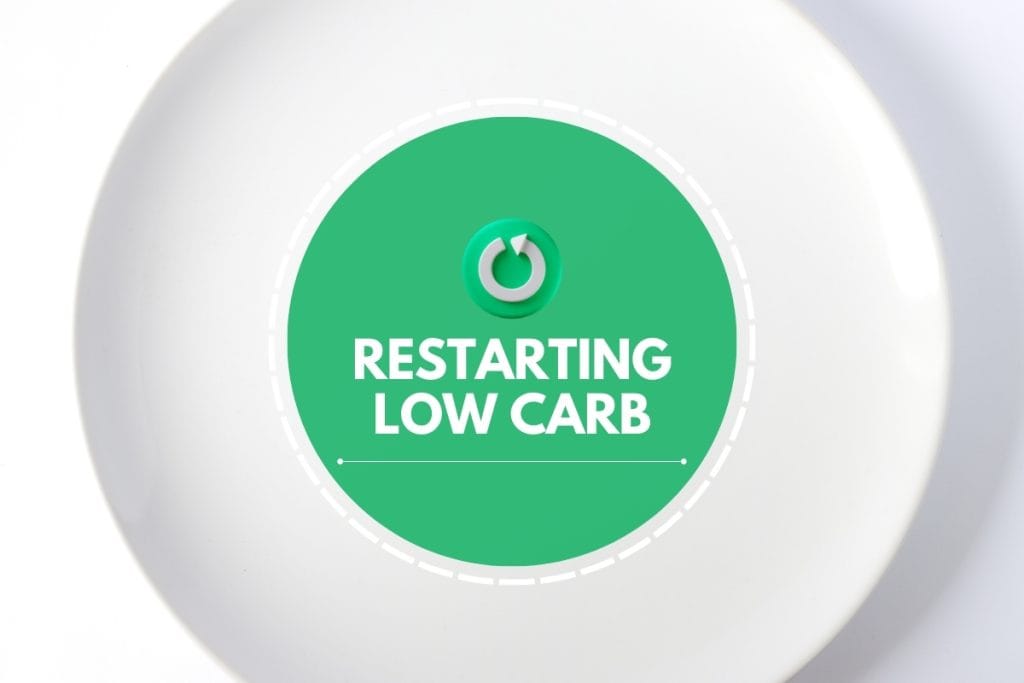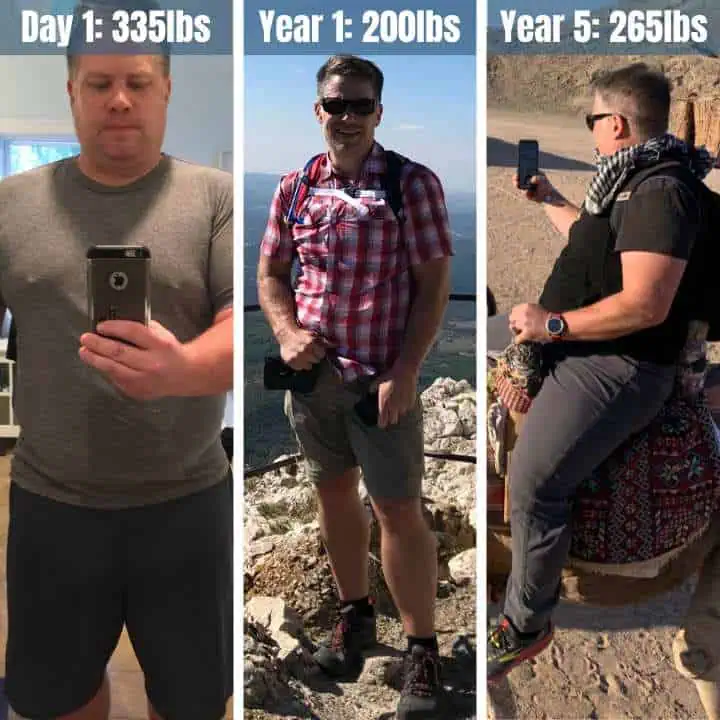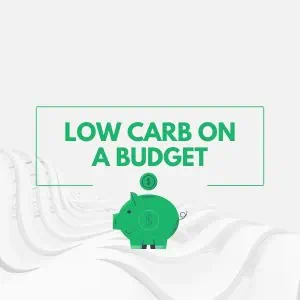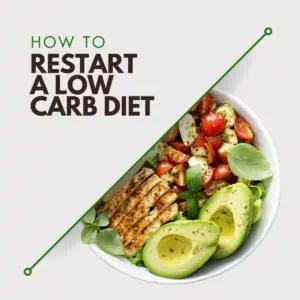Restarting a low carb diet can feel daunting, especially when you’ve been off track for a while. Hi, I’m Scott, and I’ve been navigating the low carb lifestyle for quite some time now. I understand the ups and downs, the initial excitement, the occasional slip-ups, and the challenge of getting back on course. Having experienced these fluctuations myself, I know how important it is to restart with renewed focus and a fresh perspective. Let’s dive into the strategies and mindset needed to successfully reignite your low carb journey and achieve your health goals.

Table of Contents
The Challenge of a Second Start
Restarting a low-carb lifestyle often comes with a unique set of challenges. It’s not just about dietary changes; it’s a mental and emotional journey. When I started low-carb in 2017, the immediate weight loss was significant and motivating. However, the second time around, the journey has been unexpectedly challenging.
BUILDING A LOW CARB COMMUNITY

STRONGER WITH SUPPORT
I thought this journey could be done alone. I thought I was strong enough to maintain the weight loss for the rest of my life.
I was wrong.
Subscribe below and keep in touch. Join the conversation. I’m here to support your journey too.
Here are the only updates I’ll ever send: New Recipes with Low-Carb Tips. That’s it. For updates on my Journey, expanding community etc… please visit my subscriptions page.
Unsubscribe at anytime from anything I send.
Facing the Reality of Backsliding
After keeping off the weight for almost five years, I thought that my old habits were gone and perhaps my body had figured out a way to maintain itself without me needing to do the work every single day.
One day, I ate an ice cream cone. The next, I ate another. I saw no difference, so I assumed I would be fine.
Almost a year later, I faced the consequences of my choices. My old habits crept back, leading to weight gain, loss of self-esteem, emotional eating and an overwhelming feeling of defeat. My double chin returned, my belly hung over my waistline and my energy disappeared.
The emotional toll of regaining the weight
The emotional impact of this backslide was significant. Feelings of confusion, embarrassment, and disbelief were my constant companions. I realized that my initial belief of having “beaten” my weight issues was misguided. The journey, I learned, was ongoing.

Breaking the Cycle of False Starts
Every time I tried to restart my low-carb lifestyle, I faced setback after setback. I found myself stuck in a cycle of making promises to eat better, only to break them and turn to comfort food. The turning point came when I realized I needed to change my approach. Understanding this was the first step toward finding a more effective way to stick to low-carb eating.
Key First Steps to Restarting Low Carb
Reflecting on Past Attempts
Restarting a low-carb diet is a journey many of us. The road to success is often paved with setbacks and challenges, and it’s important to reflect on these past attempts to understand what went wrong and how we can improve.
Analyzing Past Challenges
One of the most common obstacles I faced during my previous attempts was the lack of preparation. Diving into a low-carb diet without a solid plan made it easy to fall back into old habits. I often didn’t have healthy snacks on hand, leading me to reach for convenient high-carb alternatives. Social events and dining out also presented significant challenges, often resulting in unintentional carb intake. Additionally, dealing with cravings was tough, especially for bread, pasta, and sweets, which derailed my progress.
Learning from Mistakes
Understanding these challenges has been crucial in developing a more effective approach. I’ve learned the importance of having a plan, including meal prepping, having low-carb snacks available, and knowing what to order when eating out.
Check out a very helpful guide on Common Mistakes To Avoid on Starting A Low Carb Diet.
Setting Realistic Goals
Clear goals help you stay focused and committed, preventing frustration and setbacks often caused by vague or overly ambitious objectives. Whether aiming for weight loss milestones, improvements in health markers like blood sugar levels or cholesterol, or adopting sustainable lifestyle changes, each goal should be specific, measurable, attainable, relevant, and time-bound (SMART).
Crafting a Sustainable Meal Plan
Creating a sustainable meal plan is essential for successfully restarting a low-carb diet. A flexible approach ensures variety and enjoyment while adhering to dietary goals. Asses your dietary needs and preferences, incorporating a balance of protein, healthy fats, and low-carb vegetables into each meal. Absence of meal planning causes to consume carb-laden meals and you always give up to your carb cravings!
Plan Your Meals: Create a meal plan that includes a variety of low-carb foods you enjoy. This will make it easier to stick to your diet and avoid impulsive eating. Weekly meal plans are something that have always helped me!
Essential Low Carb Foods
Stock your kitchen with essential low-carb food options. Focus on high-quality proteins like chicken, fish, and tofu, complemented by healthy fats such as olive oil, avocados, and nuts. Include a variety of low-carb, non-starchy vegetables like spinach, broccoli, and cauliflower, which provide essential nutrients and fiber without excess carbohydrates. Keep pantry staples like coconut flour, almond meal, and sugar-free sauces on hand for versatile cooking and baking options.
Get my Free Low Carb Shopping List for easy shopping! Having the right ingredients on hand makes it easier to keep carb count in check.

Preparing Your Environment
Kitchen Overhaul
Stocking your kitchen with low-carb essentials is crucial for maintaining low-carb success. Begin by filling your pantry and refrigerator with nutrient-dense foods that align with your dietary goals. Opt for lean proteins such as chicken breast, turkey, and fish, along with healthy fats like olive oil, avocados, and nuts. Keep a variety of low-carb vegetables such as leafy greens, broccoli, and bell peppers on hand for easy meal preparation. Additionally, include pantry staples to enhance flavor without added carbohydrates.
Removing Temptations
Eliminating high-carb, unhealthy foods from your home is key to carb reset. Conduct a thorough pantry and refrigerator audit, identifying items high in sugars, refined grains, and processed foods. Donate unopened items to food banks or shelters, and discard opened or expired products. Replace these items with healthier alternatives that support your dietary goals.
Building a Support System
Finding Support
Engage with online communities or local groups that provide encouragement and shared experiences in the low-carb lifestyle. These platforms offer valuable tips, recipes, and motivation to help you stay committed and inspired.
Accountability Partners
Partner with a friend or online companion who shares your goals. Regular check-ins, sharing progress updates, and setting joint goals can significantly boost motivation and keep you accountable on your low-carb journey.
Start with Small Changes
Avoid overwhelming yourself by trying to change everything at once. Begin with small, manageable adjustments to your diet, gradually incorporating more low-carb foods and habits over time. For example I love my 48 hour to go low carb challenge that helps me understand things.
Keeping a Journal
Maintaining a journal helps track meals, emotions, and progress. It provides insights into eating habits, triggers, and successes, aiding in adjustments for sustainable results.
I love my Starting Line To Low Carb Diet sheet that helps me set clear goals.
Monitoring Results
Utilize methods like measuring weight loss, tracking body measurements, and assessing energy levels to gauge physical and health improvements. Regular monitoring enhances awareness and supports adjustments for optimal low-carb diet outcomes.
Adapting and Overcoming Setbacks
Be prepared to adjust your plan as needed to navigate life’s changes. Flexibility is key to sustaining your low-carb success. Stay open-minded and ready to modify your approach to ensure continued progress on your journey.
Practicing Self-Compassion
Be kind to yourself, especially during setbacks. Understand that progress is not always linear, and every small step forward is a victory. Celebrate your successes and learn from challenges without being overly critical.
Incorporating Enjoyment and Variety
Incorporate a variety of amazing recipe ideas that help with your carb cravings and keep things interesting and enjoyable. Easy, convenient meals not only provide health benefits but also help you maintain the carb content.
Conclusion
As you embark on restarting your low-carb journey, remember that every step forward, no matter how small, is progress. Stay committed to your goals, stay adaptable to changes, and celebrate every achievement along the way. You have the power to make lasting changes for your health and well-being. Keep going, stay focused, and believe in yourself—you’ve got this!
Is it low carb? Learn more about it:

Is Gelatin Low Carb or Keto?
Gelatin is a popular ingredient often used for its thickening properties, but is it suitable for low-carb or keto diets?

Is Beef Jerky Keto Friendly?
Beef jerky can be a great snack for those on a low-carb or keto diet, but it’s essential to check

Is Xanthan Gum Low Carb?
Xanthan gum is a popular thickening agent in many recipes, but how does it fit into a low-carb diet? The


















